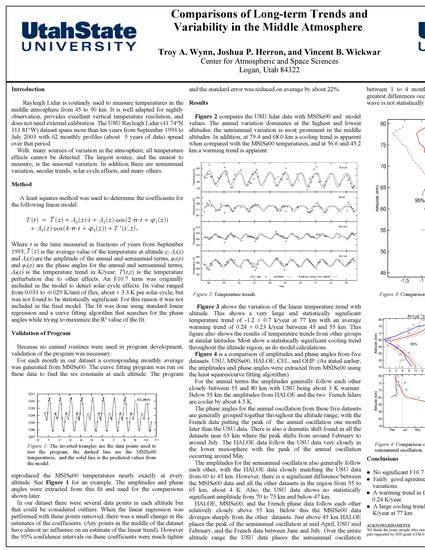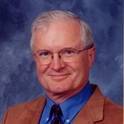
Article
Comparisons of Long-term Trends and Variability in the Middle Atmosphere
CEDAR Workshop, Santa Fe, NM
Document Type
Poster
Publication Date
7-2-2004
Disciplines
Abstract
Rayleigh Lidar is routinely used to measure temperatures in the middle atmosphere from 45 to 90 km. It is well adapted for nightly observation, provides excellent vertical temperature resolution, and does not need external calibration. The USU Rayleigh Lidar (41.74°N 111.81°W) dataset spans more than ten years from September 1993 to July 2003 with 62 monthly profiles (about 5 years of data) spread over that period.
With many sources of variation in the atmosphere, all temperature effects cannot be detected. The largest source, and the easiest to measure, is the seasonal variation. In addition there are semiannual variation, secular trends, solar cycle effects, and many others.
Citation Information
Wynn, T., Herron, J., & Wickwar, V. (2004, July 2). Comparisons of Long-term Trends and Variability in the Middle Atmosphere. Presented at the CEDAR Workshop, Santa Fe, NM.

Presented at the CEDAR Workshop, Santa Fe, NM. PDF of poster available for download through link above.